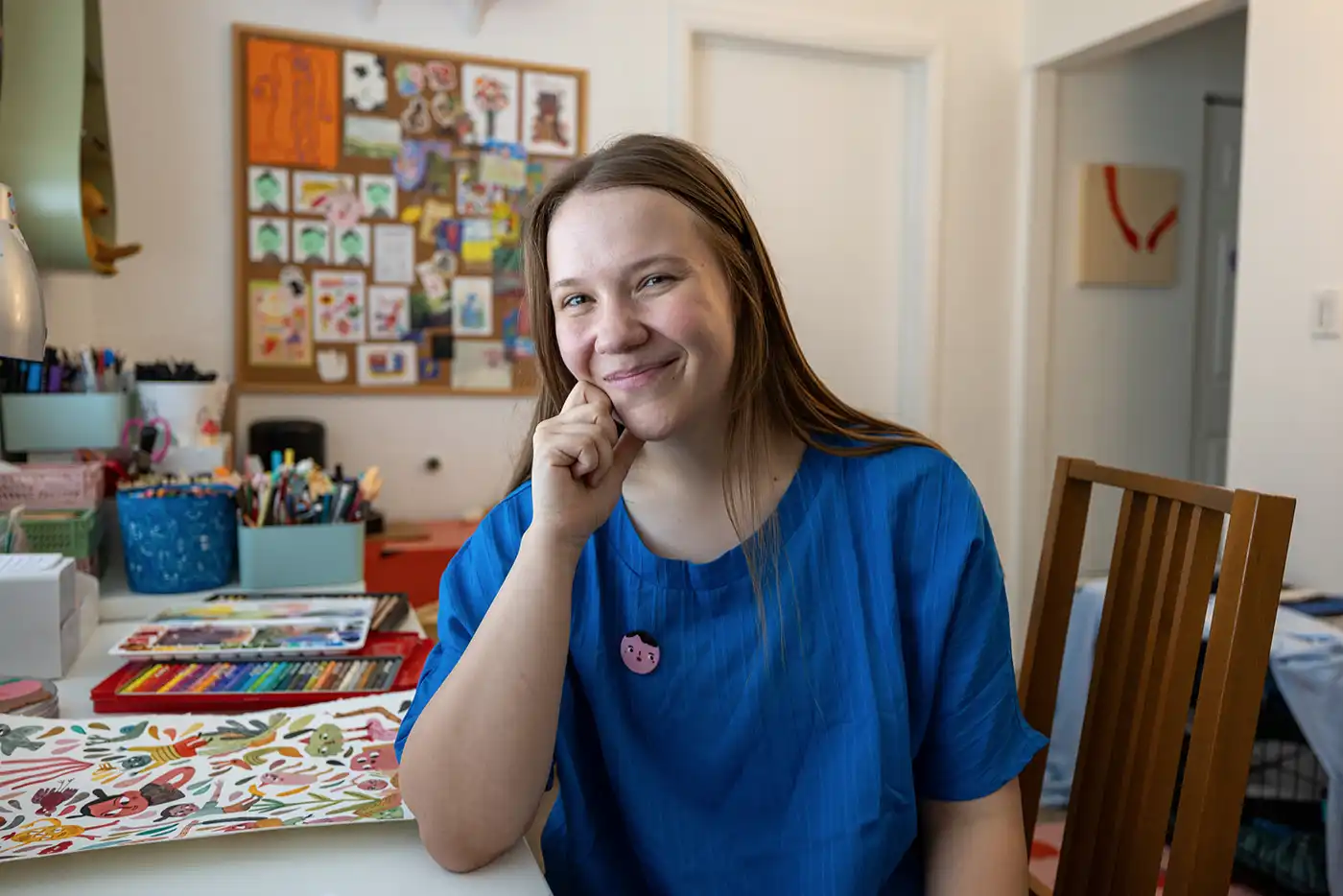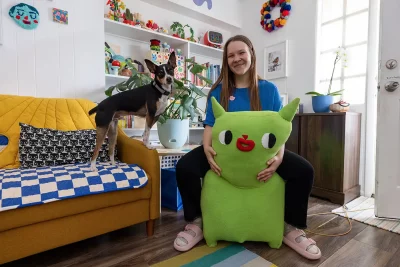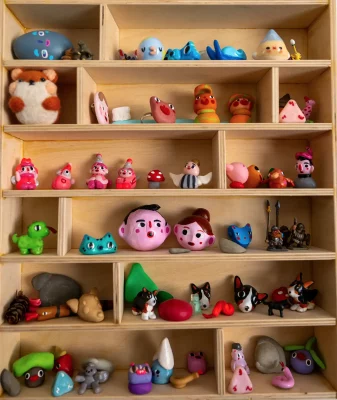
Fiona Matisse Barney and the Art of Teaching
Activism, Outreach and Education

Fiona Matisse Barney is the art teacher everyone wishes they had in high school. With an eager attitude to learn new techniques and willingness to share her creative knowledge with students, it’s easy to see Barney’s true passion is not just practicing art but teaching it through self-designed methodology.
Barney finds art to be a fun and therapeutic way to express oneself and to cope with the everyday stressors of life. “Kids need an outlet besides their phone,” says Barney. Through her art course, she looks for ways to help students communicate and process their emotions. She also recognizes that not all kids will connect with art, and she encourages her students to apply what they learn from her art classes to whatever fields they are interested in.
“… more than anything, I care about [students] feeling safe in my classroom and that they’re comfortable and know they are cared about.”
Barney’s courses incorporate skill-based techniques while also teaching students to think critically. To achieve both of these focuses, her classes include workshops that teach specific technical skills, such as brush stroke styles or watercolor techniques as well as projects that pose innovative questions such as how to think like an artist or see something in a new way. She says, “If all of my students end up making the exact same thing, then I’ve failed because they’re making my project. I want them to figure out their own methodologies to create their assignment and think for themselves.” Through these projects, she encourages students to create their own assignments and think “like an artist.”
Barney teaches students in 9th–12th grade at Cottonwood High School where courses range from painting to drawing to 3D design and more, with all of the curriculum being original and self-made. “As I am collaborating with other artists, I like to find what’s new and relevant in the field of art and stay up to date,” says Barney in regards to developing her coursework each school year. She also likes to gather feedback from her students on what projects and skills they want to try. “My curriculum is always changing based on what students I am teaching and

what they are interested in,” she says. Students will often come to Barney with different ideas, wanting to try things like anime or collage art, and she encourages their curiosity by researching and practicing that art medium alongside her students. “I love when we can learn together,” she says.
During her classes, she finds ways for students to interact with one another, hoping they can learn to see the world through others’ points of view. “My school is super diverse, which I love because I get a lot of different perspectives, and I think it’s good for the students, too,” Barney says. “I am constantly asking myself, ‘What can I do better to support these kids?’”
English is not the first language for several of her students and that can be a challenge for both the students and teachers. To support her students, she takes an individualized approach, giving detailed, step-by-step direction to the students that require more help. This also allows her more independent students to flourish, embracing more freedom and less guidance. “I try to make my projects really adaptive to the [individual] student because I know they all come from such different places,” she says, “but more than anything, I care about [students] feeling safe in my classroom and that they’re comfortable and know they are cared about.”
“If all of my students end up making the exact same thing, then I’ve failed because they’re making my project.”
By meeting kids where they are at and drawing upon their current interests and hobbies for inspiration, Barney is able to show them that art exists everywhere. She first gives students the right tools—such as design skills and a conceptual vocabulary—and then teaches them to create their own parameters, definitions and boundaries for making an art piece on their own terms, not just in her classroom but hopefully in their futures as well.
To connect with Barney and learn more about her approach to designing art curricula, go to fionabarney.com.
Read more on art education:
Killing the Grade: Reviving Art Education in Utah
Artes de Mexico: The Art of Creating Community
